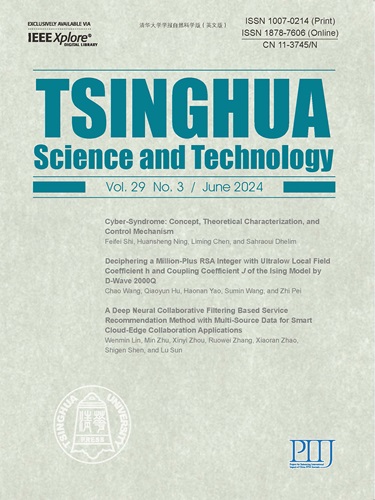基于深度学习的眼部结构分割在面部图像重症肌无力诊断中的应用
IF 3.5
1区 计算机科学
Q1 Multidisciplinary
引用次数: 0
摘要
重症肌无力是一种自身免疫性神经肌肉疾病。鉴于眼外肌表现是大多数患者的初始和原发性症状,眼肌评估被认为是必要的早期筛查工具。为了克服手动临床方法的局限性,一个直观的想法是通过成像设备收集数据,然后使用深度学习(DL)技术(特别是图像分割方法)进行分析或处理,以实现自动MG评估。不幸的是,它们在这一领域的临床应用尚未得到充分的探索。为了弥补这一空白,我们的研究前瞻性地建立了一个新的基于dl的系统来促进MG疾病的诊断,该系统具有完整的工作流程,包括面部数据采集、眼部区域定位和眼部结构分割。实验结果表明,该系统具有良好的眼结构分割性能。此外,它显著提高了医生的诊断准确性。将来,这一努力可以为医疗保健专业人员、患者和医疗资源有限的地区提供非常有前途的MG监测工具。本文章由计算机程序翻译,如有差异,请以英文原文为准。
A Deep Learning-Based Ocular Structure Segmentation for Assisted Myasthenia Gravis Diagnosis from Facial Images
Myasthenia Gravis (MG) is an autoimmune neuromuscular disease. Given that extraocular muscle manifestations are the initial and primary symptoms in most patients, ocular muscle assessment is regarded necessary early screening tool. To overcome the limitations of the manual clinical method, an intuitive idea is to collect data via imaging devices, followed by analysis or processing using Deep Learning (DL) techniques (particularly image segmentation approaches) to enable automatic MG evaluation. Unfortunately, their clinical applications in this field have not been thoroughly explored. To bridge this gap, our study prospectively establishes a new DL-based system to promote the diagnosis of MG disease, with a complete workflow including facial data acquisition, eye region localization, and ocular structure segmentation. Experimental results demonstrate that the proposed system achieves superior segmentation performance of ocular structure. Moreover, it markedly improves the diagnostic accuracy of doctors. In the future, this endeavor can offer highly promising MG monitoring tools for healthcare professionals, patients, and regions with limited medical resources.
求助全文
通过发布文献求助,成功后即可免费获取论文全文。
去求助
来源期刊

Tsinghua Science and Technology
COMPUTER SCIENCE, INFORMATION SYSTEMSCOMPU-COMPUTER SCIENCE, SOFTWARE ENGINEERING
CiteScore
10.20
自引率
10.60%
发文量
2340
期刊介绍:
Tsinghua Science and Technology (Tsinghua Sci Technol) started publication in 1996. It is an international academic journal sponsored by Tsinghua University and is published bimonthly. This journal aims at presenting the up-to-date scientific achievements in computer science, electronic engineering, and other IT fields. Contributions all over the world are welcome.
 求助内容:
求助内容: 应助结果提醒方式:
应助结果提醒方式:


